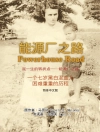He was a trailblazing twentieth-century British photojournalist but George Rodger lived in the adventurous tradition of nineteenth-century explorers. Cofounding Magnum Photos in 1947 with Henri Cartier-Bresson and Robert Capa, the modest Rodger was eclipsed by his partnersuntil now.
Rodger’s Indiana Jones-style escapades are legendary and worth the telling. He once covered over 75, 000 miles of 'old Africa’ in a Land Rover. He even survived a white rhino charge. He went on to become a key photographer of African tribal life. During World War II he covered sixty-one countries for Life magazine. He was chased through three hundred miles of Burmese jungles by both the Japanese army and a tribe of headhunters. And he was the first to record the liberation of the Bergen-Belsen concentration camp. He quit photography when he realized he was arranging 'thousands of Jewish corpses in nice photographic compositions.’
In fascinating detail Carol Naggar not only recalls Roger’s singular life and artistic contribution, but she also provides an in-depth look at the complex dynamics of ethics, violence, and photojournalism. As such, it places the legacy of George Rodger within a broader sociohistorical context.
O autorze
Carole Naggar is the author of five books and wrote the lead essay for the award-winning work Mexico Through Foreign Eyes: Photographs 1850-1990.












